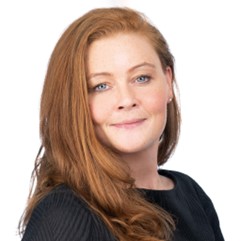Assistive Technology and AI in Inclusive Education
Working in Inclusive education for the last 20 years (sounds very old!) I’m learned so much in the last 2 years about AI and its immense capacity to remove barriers to learning. It’s a whole new language for me and many colleagues as we navigate new terminology and methods of support. In today's educational landscape, where screens are growing more and more prominent, fostering inclusivity for children with communication barriers is paramount. Assistive technology (AT) and artificial intelligence (AI) have emerged as transformative tools, enabling these students to engage more effectively in

Assistive technology encompasses a broad spectrum of devices and software designed to support individuals with barriers to learning. In the context of education, AT aims to mitigate communication barriers, thereby promoting equal learning opportunities. The integration of AI into these tools has further enhanced their efficacy, offering personalized learning experiences and real-time adaptations to individual needs.
For instance, AI-powered speech recognition software can transcribe spoken language into text, aiding students with hearing impairments. Conversely, text-to-speech applications assist those with visual impairments or reading difficulties by converting written text into audible speech. These technologies not only facilitate access to information but also bolster students' confidence and independence.
Impact on Student Development
The implementation of AT and AI in educational settings has demonstrated significant positive outcomes. Students utilizing these tools often exhibit improved academic performance, heightened engagement, and enhanced social interactions. By providing tailored support, AT enables students to participate more fully in classroom activities, fostering a sense of belonging and reducing feelings of isolation.
A study published in the Journal of Special Education Technology examined the efficacy of assistive technology for students with communication disorders. The research found that the use of speech-generating devices significantly improved the communication skills of participants, leading to better academic outcomes and increased social participation. This underscores the critical role that AT plays in supporting the development of children with communication barriers.
Notable Assistive Technology Products
The market offers a variety of AT products designed to address diverse communication challenges. Some noteworthy examples include:
● Proloquo2Go: An augmentative and alternative communication (AAC) app that provides a voice to individuals who are non-verbal or have difficulty speaking. It offers a customizable vocabulary and user-friendly interface, facilitating effective communication.
● Cochlear Implants: Medical devices that provide a sense of sound to individuals with severe hearing loss. By directly stimulating the auditory nerve, cochlear implants enable users to perceive sound, thereby enhancing communication abilities.
● Eye Gaze Technology: Systems like Tobii Dynavox allow individuals with limited mobility to control a computer or communication device using eye movements, enabling them to communicate and interact with their environment.
Topland POD's Contributions
Topland POD is a leading supplier of assistive technology products and services in the MENA region, dedicated to empowering individuals with disabilities. Their offerings encompass a wide range of innovative solutions aimed at enhancing accessibility and inclusion. Some of these products are manufactured right here in Abu Dhabi by People of Determination in a specialised facility by Zayed higher Organization thus promoting inclusive employment while supporting children’s needs at the same time.
One of their notable products is the Autism Reality Experience Training. This immersive program is designed to provide participants with a firsthand understanding of autism by simulating sensory sensitivities and behaviors associated with the spectrum. Such training fosters empathy and awareness among educators, caregivers, and peers, contributing to a more inclusive environment for students with autism.
Additionally, Topland POD offers Immersive Reality Experiences utilizing augmented reality (AR) and virtual reality (VR) technologies. These tools have been shown to increase motivation, facilitate interaction, and develop cognitive skills among neurodivergent individuals. By creating engaging and interactive learning environments, AR and VR can significantly enhance the educational experiences of students with communication barriers.
Furthermore, Topland POD provides Sensory Rooms and Sensory Hubs, which are private spaces designed to help individuals regulate their senses and emotions. Among these is the Incluzun Model Classroom, showcasing a research-based design for an inclusive classroom with amazing tech like the SMART Board RX and Moonkids Sensory Space. These environments are particularly beneficial for students who may become overwhelmed in traditional classroom settings, offering them a space that truly facilitates their learning activities.
Conclusion
The integration of assistive technology and artificial intelligence in education holds immense promise for children with communication barriers. By leveraging these tools, educators can create more inclusive and supportive learning environments that cater to the diverse needs of all students. Resources like the Model inclusive Classroom play a crucial role in advancing this mission by providing innovative solutions that empower individuals and promote accessibility. As research continues to validate the efficacy of these technologies, it is imperative for educational institutions to embrace and implement AT and AI to ensure that every child has the opportunity to succeed.
Written by award winning inclusion advocate, Founder, International Inspector, Iron (Wo)Man, passionate about SDG8
Dr. Catherine O'Farrell is one of the founders of Incluzun.com, an organisation supporting people of determination in a holistic way across the MENA region. Catherine has been working in education and inclusion for almost 20 years, she has degrees in Education and psychology and a masters in Engineering. She is passionate about developing opportunities for children with individual needs. She is an award-winning, international school inspector, has been a Group Head for some of the region's largest educational providers and has worked with international and national committees from the Global Sustainability Network to the Ministry of Education here in the UAE to push for a more sustainable and inclusive world. Catherine has spoken at UNESCO, representing the Committee for Inclusive Education in the Gulf, she is a regular media contributor and conference speaker.

Stay up to date
Subscribe to the free GESS Education newsletter and stay updated with the latest insights, trends, and event news every week. Your email address will remain confidential

